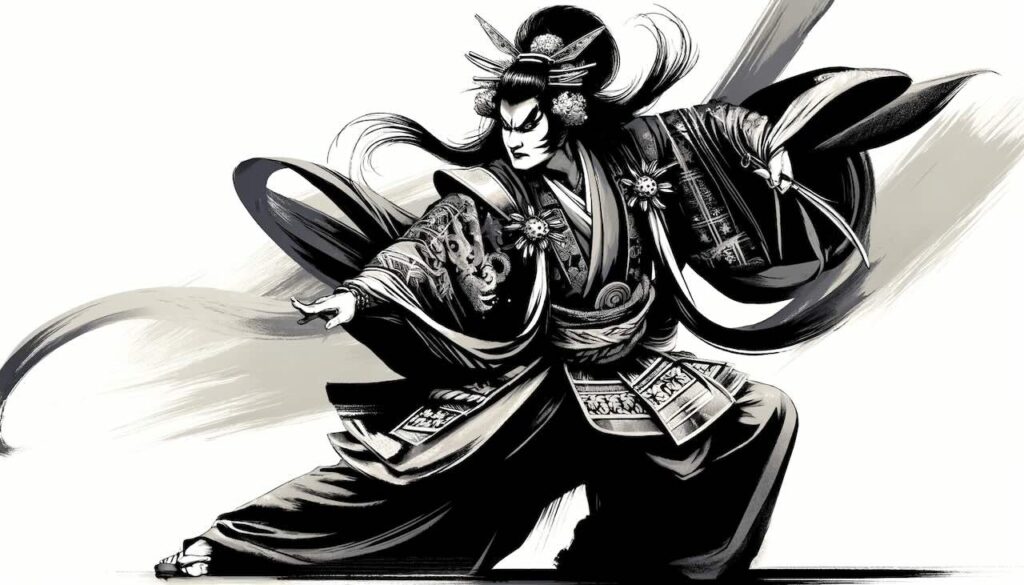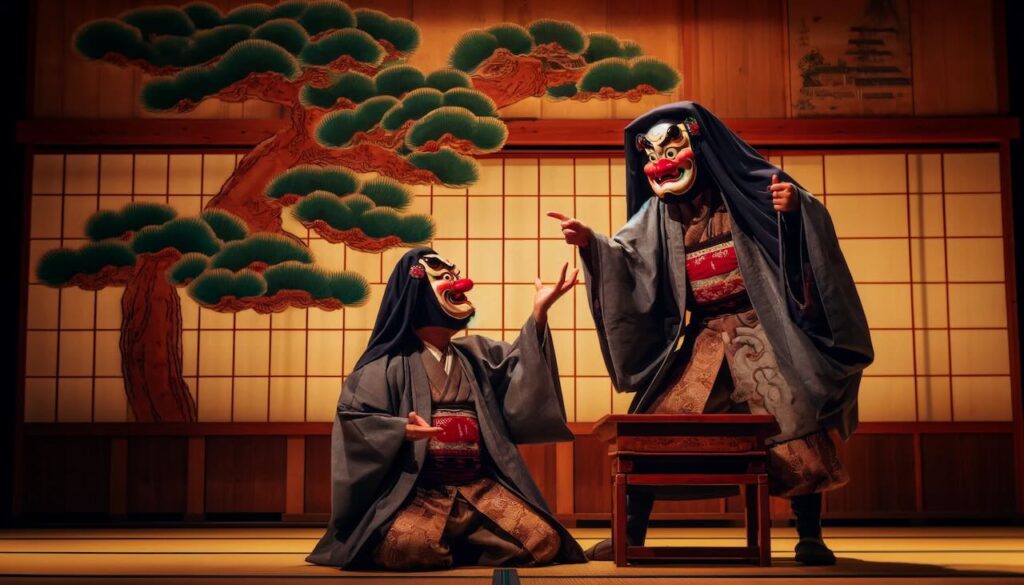With its bold costumes, stylized movements, and powerful storytelling, Kabuki stands as one of Japan’s most distinctive and celebrated performing arts. But where did it begin? Who shaped its dramatic style? And what makes Kabuki different from other forms of traditional theater?
In this article, we’ll uncover the origins of Kabuki, the meaning behind its name, and the key figures who helped elevate it into a timeless cultural treasure.
What Does “Kabuki” Mean?
The name Kabuki (歌舞伎) is made up of three kanji characters:
- 歌 (ka) – song
- 舞 (bu) – dance
- 伎 (ki) – skill or performance
Together, these elements describe Kabuki as a performance that fuses music, dance, and dramatic skill. But there’s another layer to the word: “kabuku” also meant “to slant” or “to be unconventional” in old Japanese—hinting at Kabuki’s origins as a bold, rebellious art form that challenged norms and captivated the masses.
The Birth of Kabuki: A New Form of Expression
Kabuki began in 1603, when Izumo no Okuni, a shrine maiden from the Izumo Taisha Grand Shrine, performed a provocative new style of dance-theater—“kabuki odori”—on the dry riverbed in Kyoto. Her performances, featuring dramatic costumes and daring content, gained quick popularity.
At first, Kabuki was performed entirely by women (onna-kabuki). However, due to concerns over morality and public order, female performers were banned in 1629. The stage was then taken over by young male actors (wakashu-kabuki), and later by adult male performers (yaro-kabuki), a tradition that continues today with all-male casts. Male actors specializing in female roles are called onnagata, and their artistry is one of Kabuki’s most celebrated features.
Kabuki’s Golden Era: The Edo Period (1603–1868)
As Kabuki evolved, it became a favorite form of entertainment for the common people in Edo (modern-day Tokyo) and other urban centers. The plays featured:
- Historical epics (jidaimono)
- Everyday dramas (sewamono)
- Ghost stories, love affairs, and revenge tales
Kabuki was also closely tied to other forms of Japanese art, including ukiyo-e (woodblock prints), which often depicted famous actors in dramatic poses. The lavish visual style and larger-than-life performances made Kabuki a cultural phenomenon.
Kabuki in the Meiji Era and Beyond
In the Meiji period (1868–1912), Japan rapidly modernized and Western theatrical forms entered the country. Still, Kabuki persisted—sometimes integrating modern influences but always holding true to its traditional roots. The 20th century saw new theaters built and classic plays revived, as well as the rise of formal recognition for master performers.
Today, Kabuki is recognized by UNESCO as an Intangible Cultural Heritage, and continues to captivate audiences in Japan and around the world.
Legendary Figures in Kabuki History
Izumo no Okuni
The founder of Kabuki, whose revolutionary style laid the foundation for the genre.
Sakata Tōjūrō I (1647–1709)
Known for his refined acting style in the Kansai region and as a pioneer of wagoto—a gentle, romantic style of performance.
Ichikawa Danjūrō II (1688–1758)
A Tokyo-based actor who helped develop aragoto, a bold, exaggerated acting style associated with warriors and dramatic conflict.
Onoe Kikugorō VI (1885–1949) and Matsumoto Kōshirō VII (b. 1942)
Modern masters of Kabuki who preserved the tradition while introducing it to new audiences, both honored as Living National Treasures.
What Makes Kabuki Unique?
- All-male casts: Even female roles are performed by male actors trained in the stylized movements of women.
- Striking costumes and makeup: Particularly the bold red and blue lines of kumadori face paint.
- Stylized speech and movement: Every word and gesture is heightened for theatrical effect.
- Audience participation: In some performances, fans shout out the names of favorite actors at key moments, a tradition known as kakegoe.
- Rotating stage and trapdoors: Innovations like the mawari-butai (revolving stage) allow for dramatic scene changes.
Conclusion: A Living Legacy of Art and Drama
Kabuki isn’t just theater—it’s a living window into Japanese history, emotion, and aesthetic values. Blending music, dance, elaborate staging, and centuries of tradition, Kabuki continues to evolve while preserving its roots.
By understanding its origins—from Okuni’s bold street performances to the grandeur of modern productions—we can better appreciate the richness and complexity of one of the world’s most distinctive theatrical traditions.
So next time you hear the bold drums and see the flutter of a silk sleeve on stage, remember: you’re not just watching a performance—you’re experiencing four centuries of Japanese cultural genius.


